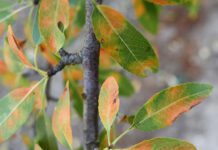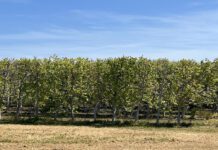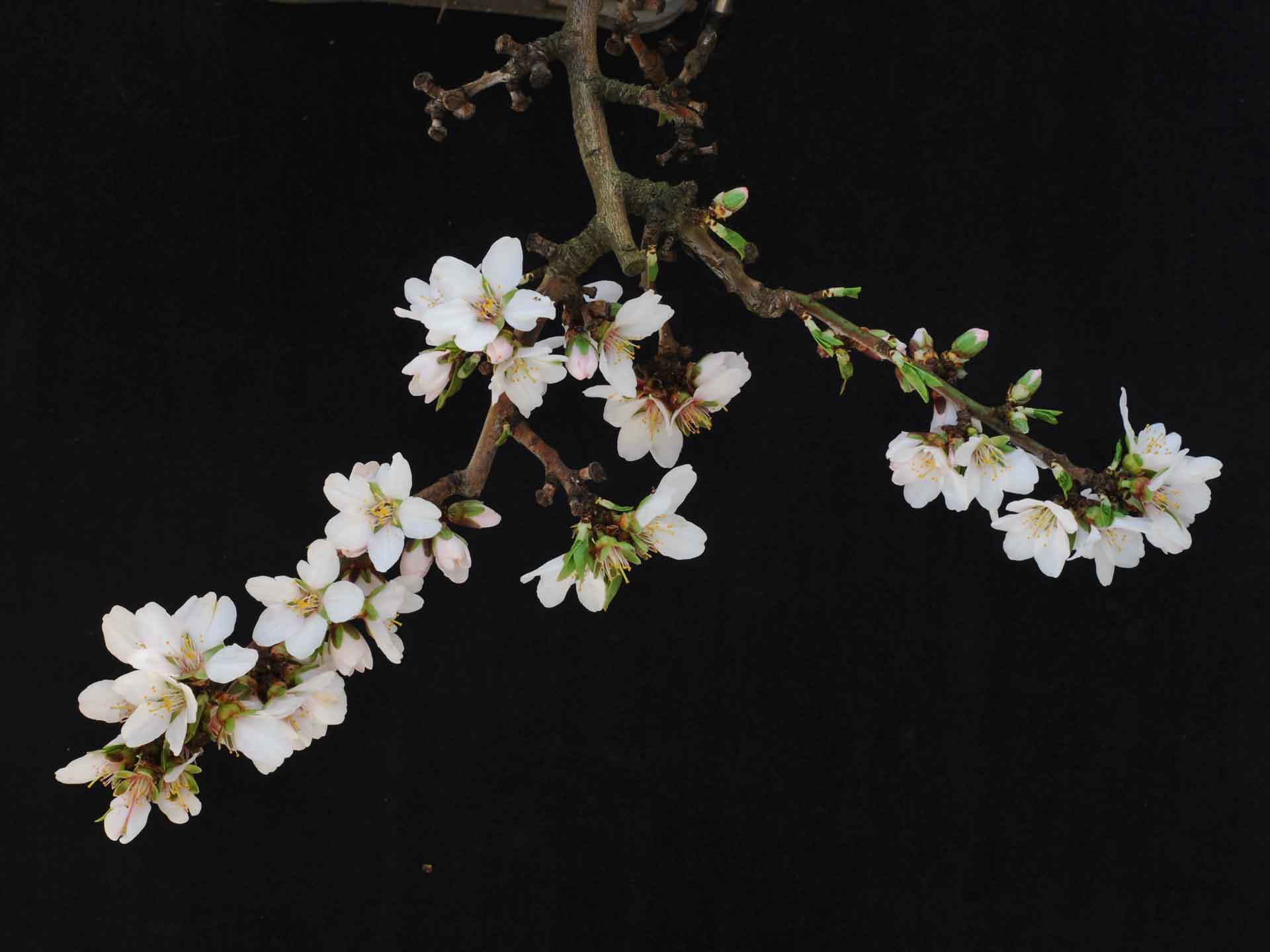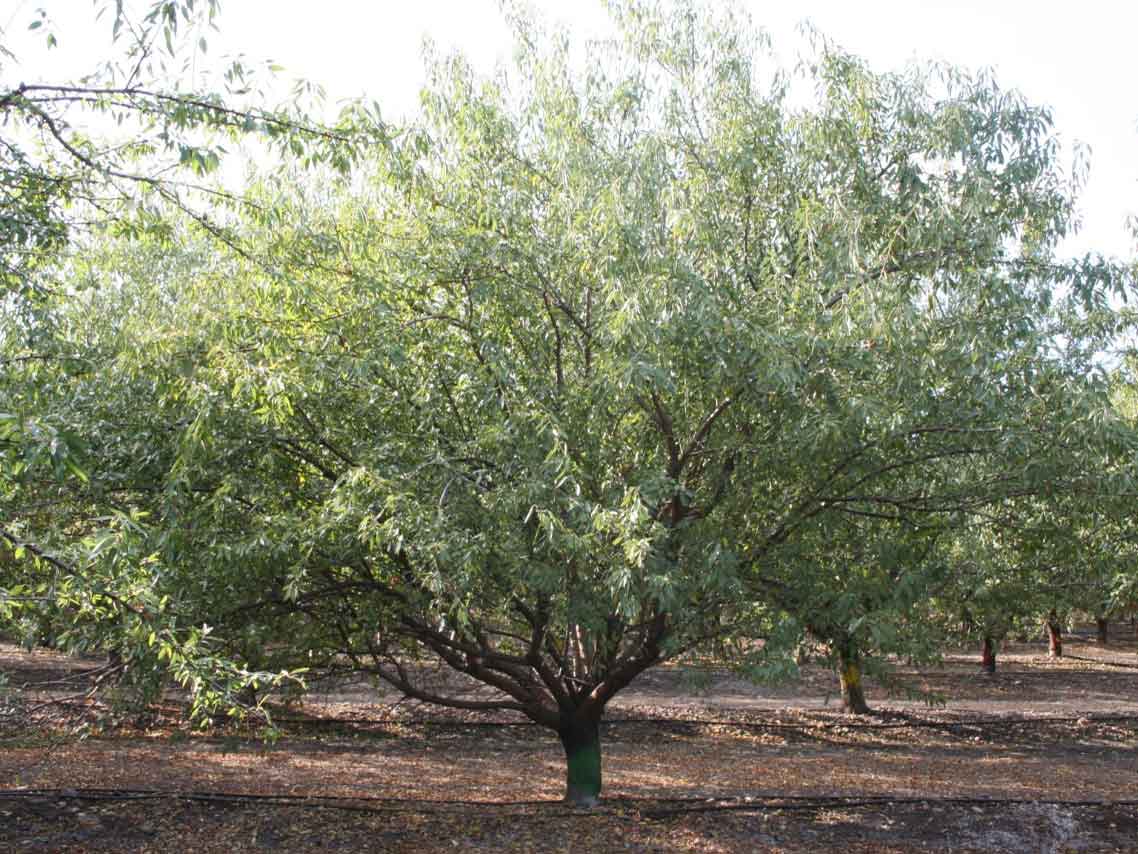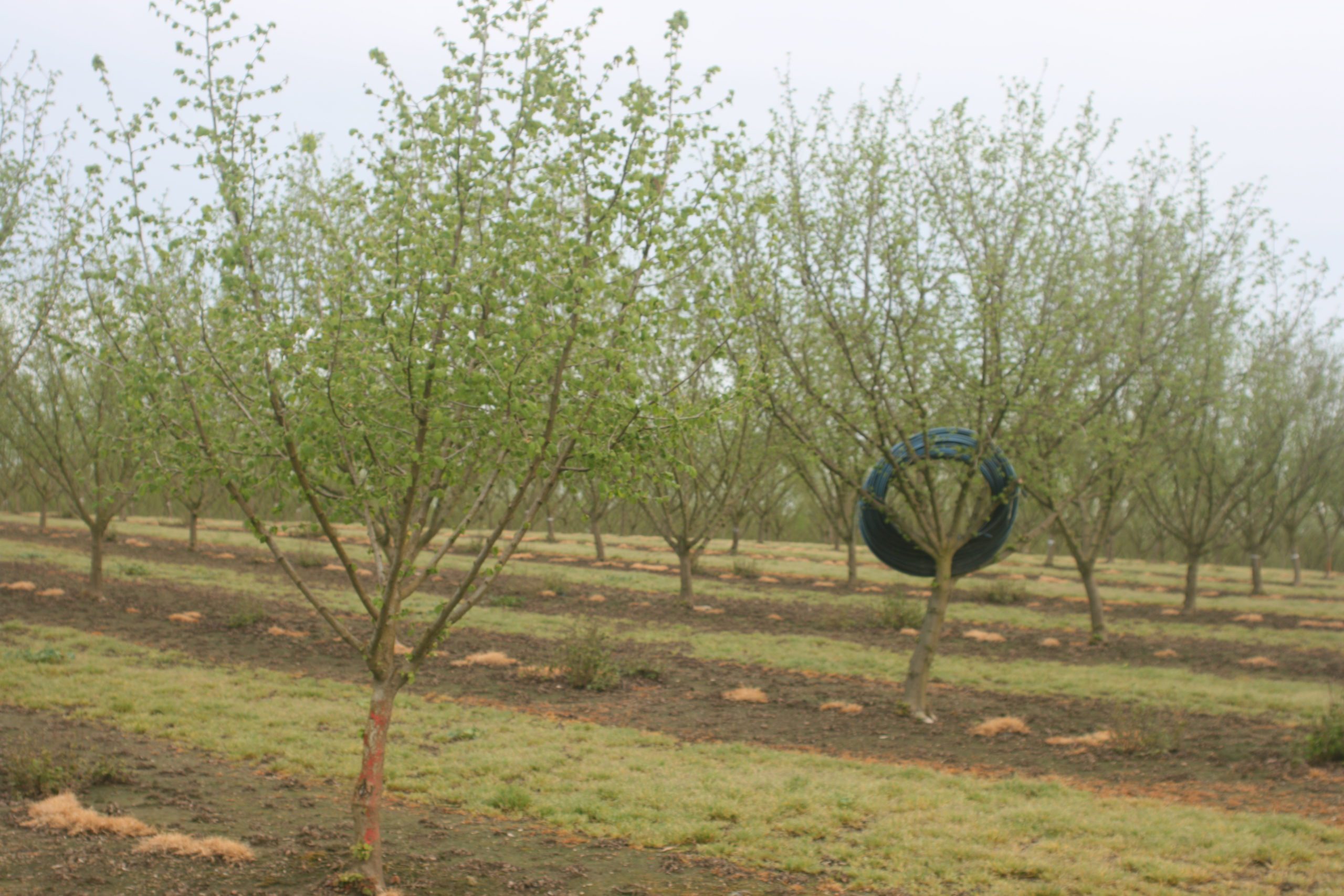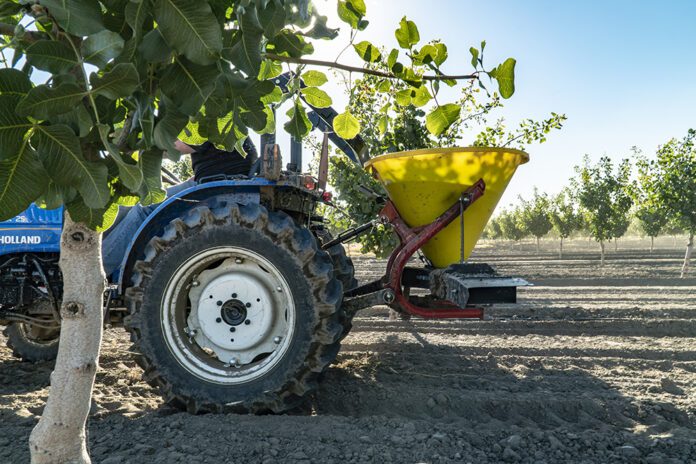
Listen to the audio version of this article. (Generated by A.I.)
“This is our only defense mechanism for reducing aflatoxins in pistachio orchards.”
Jeff Gibbons, manager of Setton Farms in Terra Bella, defines AF36 as the pistachio industry’s most valuable tool to reduce aflatoxin levels in orchards, avoiding pistachio nut rejection in export and domestic markets. Widely used today in pistachio production, AF36 was developed first with the intention to reduce aflatoxins in cottonseed used for dairy feed due to potential for contamination of dairy products.
This biocontrol product was developed at a USDA-ARS laboratory in Arizona, led by Dr. Peter Cotty. The first patent application was made in 1989, and today more than 1 million acres are treated annually to reduce aflatoxin levels, with pistachios and almonds among the major crops.
Produced by the Arizona Cotton Research and Protection Council, AF36 is a pasteurized sorghum product that carries spores of the active ingredient, AF36, an atoxigenic strain of the fungus Aspergillus flavus. When spread on field or orchard floors, the atoxigenic spores outcompete the toxigenic spores, reducing the aflatoxin levels in the soil.
In collaboration with Dr. Cotty’s laboratory and Cotton Incorporated, the Arizona Cotton Research and Protection Council (ACRPC) initiated efforts to produce quantities of the biocontrol product for commercial use. Larry Antilla, the council’s AF36 product consultant, credits USDA-ARS researchers for identifying the atoxigenic strains of the Aspergillus flavus fungus.
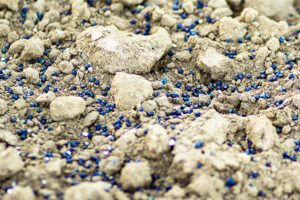
Mass Production
Once the active ingredient strain (AF36) was selected and a biocontrol product formulated and proven effective, mass production of AF36 was initiated through a partnership between USDA-ARS and ACRPC. AF36 is the strain name used in the initial scientific article published by Dr. Cotty in 1989. An Experimental Use Permit for cotton was issued in 1996. An Experimental Use Permit for corn was granted in 2008. Registration for use in pistachio production was granted in 2012. In 2017, registration for almonds and figs was granted.
Dr. Cotty said his laboratory relied on the ACRPC to produce the product in quantities needed once evaluations required treatment of thousands of acres. He said there have been several versions of AF36, including the current AF36 Prevail and the version for organic use, AF36 Prime.
If the entire tree nut industry would treat annually, it would be good insurance for all.
– Larry Antilla, Arizona Cotton Research and Protection Council
To make the product, the ACRPC facility cultures and harvests live AF36 spores daily during production season. This critical step verifies spore viability and atoxigenicity at the field level. Seed-treating equipment is used to coat roasted sorghum seeds with a mixture of spores, spreader sticker and colorant. The spores of the atoxigenic strain are produced fresh each day at the ACRPC facility and are verified to be genetically correct and absent of any contaminant.
ACRPC is a nonprofit component of the State of Arizona government. It sells AF36 products directly to all farmers and processors FOB Phoenix, Ariz. However, AF36 is also available from distributors in California and Texas.
In 1998, more than 30,000 acres of cotton ground were treated to collect efficacy data for Dr. Cotty’s lab. USDA also helped with contracting outside toxicology labs to perform toxicity testing for bees, birds and vertebrates. Toxicity tests were completed in 2000, and a label for unlimited corn acreage was approved in 2010.
Production by ACRPC was gradually scaled up, and currently the facility has the capacity to produce material for over 1 million acres per year. The Arizona facility is continually producing AF36 spores that are microbiologically pure and have been genetically verified.
“It has worked well everywhere it has been applied; we’ve taken thousands of samples to validate positive effects on aflatoxin producers,” Antilla said.
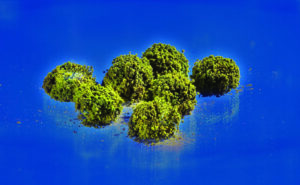
Thousands of soil samples taken prior to application of AF36 and after validate the high efficacy of AF36 products. ACRPC Field Program Coordinator Donna Fairchild travels to California sites where applications are made to take soil samples as a service to growers who use AF36.
The soil in the orchard where AF36 is applied is sampled to show the ratio of toxigenic to atoxigenic strains in the soil. Soil samples also show that the atoxigenic strains persist and overwinter at high levels and carry the displacement forward to the next growing season, allowing for cumulative benefits throughout production areas.
Themis Michailides, UCCE plant pathologist at the Kearney Ag Center, has been conducting research on AF36 and the Syngenta product Afla-Guard for the past eight years. He reports that field studies in both pistachio and almond orchards showed aflatoxin reduction from 20% to 45% in crop samples. Displacement rates in the soil reached 90% to 95%.
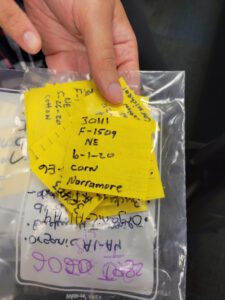
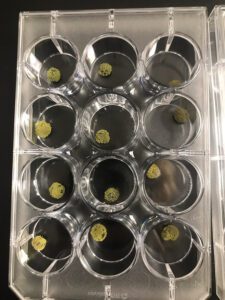
Dr. Cotty explained three ways this biocontrol product works to reduce aflatoxins in pistachio nuts:
• It changes the population structure of fungi in the soil, on crops and throughout the air so aflatoxin producers are far less common.
• AF36 inhibits aflatoxin production by toxigenic spores when both occur on the same pistachio kernel.
• AF36 has the capacity to degrade aflatoxins under certain conditions.
“Treating with AF36 products also makes the environment around the orchards healthier,” Dr. Cotty said, noting that AF36 spores contain no aflatoxins, whereas spores of aflatoxin producers contain very high concentrations of aflatoxins. Spores of aflatoxin producers in the air, which can be inhaled, are greatly reduced and replaced with AF36 both within the air of treated fields and throughout the area.
Antilla said the history of the product development and use was a major achievement for the council and is still shepherded by the Arizona cotton industry.
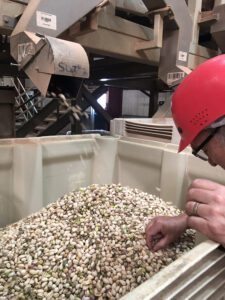
Reducing Molds
Reducing aflatoxin-producing molds in pistachio nuts is important for the pistachio industry. The Pistachio Export Aflatoxin Reporting program was developed in 2018 by the Administrative Committee for Pistachios and the USDA-AMS to provide for pre-export aflatoxin testing. The program includes setting a shipping tolerance that equals or is more restrictive than the EU tolerance.
For pistachio growers, use of AF36 isn’t a question. Gibbons said this biocontrol product is used in conventional and certified organic orchards with the organic version AF36 Prime. It is spread on wetted areas of orchard floors during June and July at a rate of 10 pounds per acre.
“The pistachio industry is aggressive about keeping aflatoxin levels as low as possible,” he said. Setton is also aggressive in sorting out nuts with shell defects, including dark stain, adhering hull and insect damage, that have the potential to be contaminated.
Gibbons said 2012 was a particularly bad year for navel orangeworm damage, and nuts were hand sorted three times to lower the risk of rejection by EU markets.
He said as use of AF36 increased, the failure rate for export shipments went from 10% to near zero and has remained low since then. All Setton growers apply AF36 in their orchards, Gibbons said.
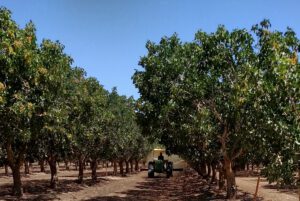
Bowie, Ariz. pistachio grower Jim Cook relates similar success with the use of AF36, which he has been using for 17 years. Cook, who also manages 1,500 acres of pistachios for A&P Farms, said Arizona pistachio growers rely on AF36 to reduce aflatoxin contamination, clearing their way for export and domestic markets.
“Once in a while we’ll get a hit, but most of the time our aflatoxin is near zero,” Cook said.
The processor won’t take any pistachios from orchards that are not treated with AF36, he added.
Given the presence of aflatoxin-producing fungi in the soil, it is impossible to rule out contamination even with the use of AF36, Antilla said. Corn and cotton crops grown without the use of AF36 to lower aflatoxin levels supply toxigenic mold spores that blow into nearby crops, including pistachios.
“If the entire tree nut industry would treat annually, it would be good insurance for all,” Antilla said.

Cecilia Parsons
Cecilia Parsons has lived in the Central Valley community of Ducor since 1976, covering agriculture for numerous agricultural publications over the years. She has found and nurtured many wonderful and helpful contacts in the ag community, including the UCCE advisors, allowing for news coverage that focuses on the basics of food production.
She is always on the search for new ag topics that can help growers and processors in the San Joaquin Valley improve their bottom line.
In her free time, Cecilia rides her horse, Holly in ranch versatility shows and raises registered Shetland sheep which she exhibits at county and state fairs during the summer.







